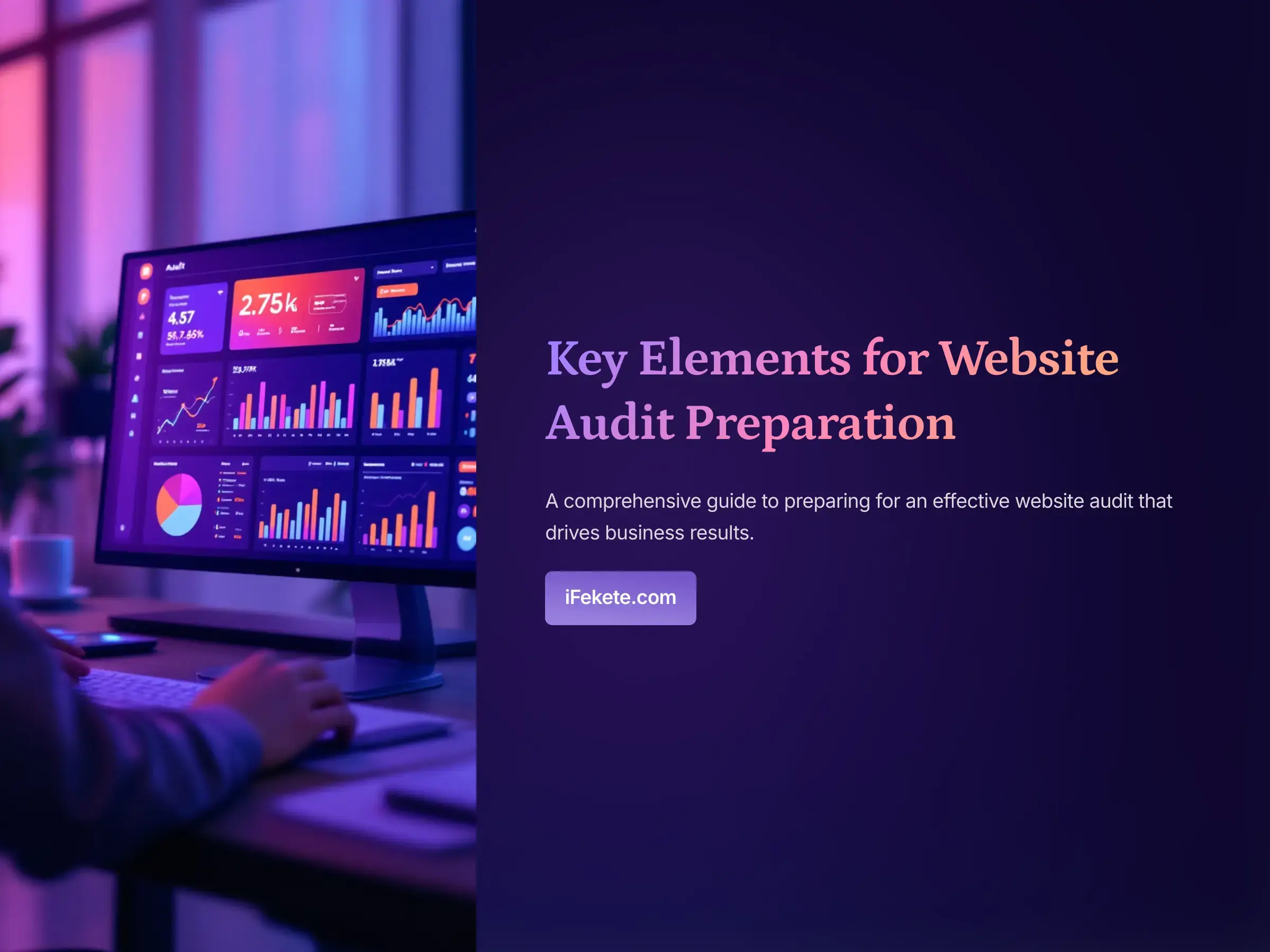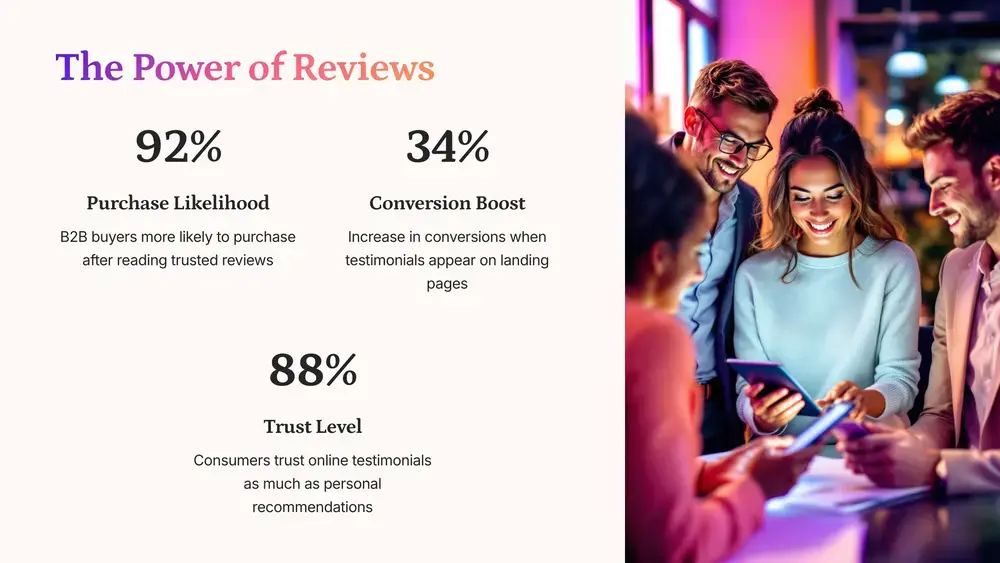Website Audit Preparation: Setting Your Foundation for Success

Share this post
Executive Summary
Effective website audits require proper preparation to deliver actionable results. Start by clearly defining your audit scope—whether comprehensive, section-specific, or issue-focused. Assemble a core toolkit of essential platforms (Google Analytics, Search Console) and specialized tools as needed. Ensure proper configuration of all tools and establish clear performance baselines across traffic, behavior, technical, and conversion metrics. Create a structured documentation system to manage findings and prioritize improvements based on business impact. This preparation phase transforms a potentially overwhelming process into a strategic roadmap for increasing website performance and lead generation.
Building on our previous discussion about why website audits matter, it's time to focus on how to properly prepare for a successful audit. Without the right preparation, your audit may miss critical issues or fail to deliver actionable insights. Let's dive into the essential steps for setting a solid foundation for your website audit process.
Defining Your Audit Scope
Before grabbing your digital toolbox, you need to determine what you're examining. The scope of your audit directly impacts its effectiveness. Consider these options:
- Full-Site Audit: A comprehensive evaluation covering all website aspects (ideal for annual reviews)
- Section-Specific Audit: Focusing on particular areas like your blog or product pages (perfect when resources are limited)
- Issue-Specific Audit: Targeting known problem areas such as page speed or mobile usability (great for addressing specific complaints)
- Competitive Audit: Benchmarking your site against competitors (valuable for market positioning)
For larger websites with hundreds or thousands of pages, I recommend a tiered approach—start with your high-traffic and high-conversion pages, then expand to secondary content. This prioritization ensures you focus first on the pages directly impacting your business results.
Building Your Audit Toolkit
A successful website audit requires the right tools, but the overwhelming number of options can lead to "analysis paralysis." To simplify your selection process, I've organized essential tools by complexity and cost:
For Beginners: Start With These Fundamentals
- Google Analytics 4: Provides critical user behavior data and conversion insights
- Google Search Console: Offers search performance data and identifies indexing issues
- PageSpeed Insights: Analyzes loading performance and Core Web Vitals
- Mobile-Friendly Test: Quickly evaluates mobile responsiveness
These free tools form the foundation of any website audit and provide valuable data without a steep learning curve.
For a More Comprehensive Audit
- Screaming Frog SEO Spider: The free version (up to 500 URLs) identifies technical issues
- Ahrefs (Paid) or Ubersuggest (Free tier): For keyword analysis and content gap identification
- Hotjar (Free tier available): Creates heatmaps and user recordings to understand behavior
- BrowserStack: Tests cross-browser compatibility issues
If you're feeling overwhelmed by tool selection, start with just the Google tools. You can always expand your toolkit as you become more comfortable with the process.
Proper Tool Configuration
The data collected is only as good as your tool setup. Many audits fail to deliver actionable insights because of improper configuration. Ensure your tools are set up correctly with these checklists:
Google Analytics Setup
- Verify tracking code is on all pages
- Set up goal tracking for conversions
- Create custom dashboards for key metrics
- Filter internal traffic to avoid skewing data
Google Search Console Setup
- Verify all versions of your website (www/non-www, HTTP/HTTPS)
- Submit your sitemap for proper indexing
- Connect with Google Analytics for integrated data
- Set up email notifications for critical issues
Crawler Configuration
- Configure crawl settings to match Googlebot
- Set user-agent to mobile for mobile-first assessment
- Identify areas to exclude (like parameter-heavy URLs)
- Prepare custom extraction for specific elements
Spending time on proper configuration pays dividends by providing more accurate and actionable data.
Establishing Performance Baselines
Before implementing any changes, you need to establish clear baselines. These measurements serve as your "before" picture and allow you to demonstrate improvement after implementing recommendations.
Key metrics to document include:
Traffic Metrics
- Organic sessions
- Direct traffic
- Referral sources
- Search queries driving traffic
User Behavior Metrics
- Bounce rate by page and device
- Average session duration
- Pages per session
- Common user flow patterns
Technical Performance Metrics
- Core Web Vitals scores
- Page load time for key landing pages
- Time to first byte (TTFB)
- Mobile responsiveness scores
Conversion Metrics
- Conversion rate by traffic source
- Form completion rates
- Funnel abandonment rates
- Revenue per visitor (if applicable)
Document these metrics in your audit tracking system so you can measure the impact of your changes later.
Creating a Documentation System
One of the biggest challenges in website audits is managing the complexity and volume of findings. Many auditors become overwhelmed by the sheer number of issues discovered. To combat this, create a structured documentation system:
- Master tracking spreadsheet: Document all issues with severity, impact, and implementation difficulty ratings
- Detailed recommendations document: Provide specific fixes for identified issues
- Visual evidence repository: Screenshot issues with annotations for clarity
- Implementation timeline: Organize fixes into immediate, short-term, and long-term phases
Breaking your audit into manageable sections makes the process less overwhelming and more actionable. This structured approach transforms a potentially chaotic process into a systematic improvement plan.
Overcoming Common Setup Challenges
Even the most experienced auditors face challenges in the setup phase. Here are solutions to common roadblocks:
Challenge: Tool overwhelm
Solution: Start with just Google Analytics and Search Console. Add more specialized tools only as needed.
Challenge: Access limitations
Solution: Prepare a specific list of required access levels for stakeholders. Explain why each access is necessary for a complete audit.
Challenge: Data quality issues
Solution: If historical data is incomplete, acknowledge limitations and focus on establishing proper tracking for future measurement.
Challenge: Resource constraints
Solution: Prioritize audit sections based on business impact. Begin with areas directly affecting conversions and revenue.
Next Steps
With your foundation properly set, you're ready to begin the technical aspects of your audit. In our next article, we'll dive into the technical SEO audit phase, examining crawling, indexing, site speed, and other critical technical factors.
Remember, a thorough audit preparation phase dramatically increases the value of your findings. By following these steps, you'll transform what could be a chaotic process into a strategic roadmap for continuous website improvement.
Need help setting up your audit process? Contact me for a free 15-minute consultation to discuss how I can help you identify and fix issues that are preventing qualified leads from converting on your website.





